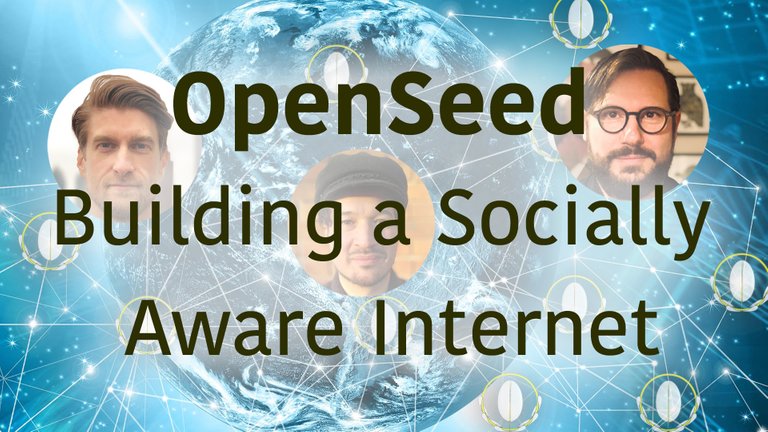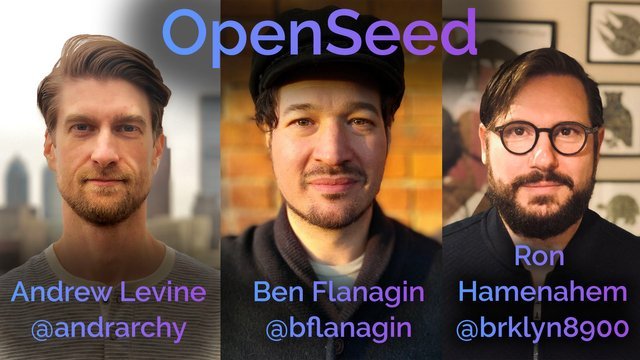
We’re the OpenSeed team and we’re on a mission to build a more socially aware internet. We believe that Steem was built to be the backbone of this socially aware internet, but there’s also a lot more to a body than a backbone.
The Connective Tissue
Our goal for OpenSeed is to be that body. The soft “connective tissue” around that incredible backbone that can help people connect, communicate, and collaborate, all while maintaining complete control and ownership of their information and having that information protected by strong encryption.
Vote on our Steem.DAO proposal if that’s all you need to hear
Is the Internet Working?
The internet was not designed to connect people, or unearth truth, it was designed simply to connect computers and the deficiencies of this design are becoming painfully obvious to everyone. People are more anxious, depressed, and disconnected than ever and the line between real and fake information is vanishing at an alarming rate.
Impossible Problems?
What makes us think we can solve such difficult problems? One major advantage we have is that we aren’t starting from scratch. The Steem blockchain has already solved the really tough problems and OpenSeed relies heavily on Steem as a distributed database capable of storing public information and digital assets. But just because Steem has solved so many important problems, that doesn’t mean it can, or should, solve every problem.
Steem
Steem is the most advanced protocol in terms of tokenizing the web, and its ability to publicly store human-readable text was a brilliant way to bootstrap an open and decentralized database intended to power web applications. But Steemit’s stated mission has never been about content or social interactions.
Steemit’s vision for Steem is to deliver the best protocol for powering web applications and distributing stake to everyone who contributes value to a community; what they call “tokenizing the web.” We respect that vision and want to build on it by creating a new layer that adds all of the additional features people want from their Steem applications, but that Steem is not ideal for delivering.
Storing Private Information
When it comes to powering web applications, Steem’s content storage capabilities are all about posting information publicly on a database that can never be altered or taken down. That is an incredibly valuable feature, but the vast majority of features used by applications involve sharing private information.
Even seemingly simple features like customizable passwords require private databases. But just because the databases are private does not mean that you can’t have just as much control over your information. In fact, OpenSeed is all about giving you a way to store and communicate information privately so that you can retain total control over it.
The Power of The Message
Instead of starting from the point of posting everything publicly and working backwards in an attempt to add features Steem is not built to deliver, OpenSeed starts from the basis of one simple concept; the private message, and then builds every other feature on top of that.
If you want to share information with one person, and one person alone, you can do that through an encrypted message on OpenSeed. If you want to share that message with a group of people, you can do that through an encrypted group chat. If you want to share it with a Steem community, but without sharing it with the entire world, you’ll be able to do that through private communities hosted on OpenSeed.
Guest Posts and Comments
You can even share information with everyone on Steem, without posting it to the Steem blockchain. That’s right, OpenSeed can be used as a cross-platform solution for guest posts and comments.
Best of all, if you no longer want that information to be available to anyone, you can always delete it from the database, forever. If, on the other hand, you want to share it with the public on a censorship resistant blockchain, OpenSeed will make it easier than ever to share on Steem.
Vote on our Steem.DAO proposal here.
Connecting People
OpenSeed is built around people and their connections to one another. You still retain ownership and control over your information. You’re still protected by strong encryption, and leveraging the backbone of the social web (Steem) will be easier than ever.
In short, OpenSeed is an open protocol designed to connect people so that they can communicate and collaborate while being protected by strong encryption at the foundational level. That’s what we mean when we say that we’re building a socially aware internet.
A Toolbox
While this might sound like a lot, we haven’t even scratched the surface of what OpenSeed could be used to do. Think of OpenSeed as a toolbox. These features are only the first set of tools that we are putting in the toolbox because these are the tools that Steem app developers, and their users, need yesterday.
Beyond Steem
We’ve already begun work on other features designed to help all open source application developers, not just Steem developers, bootstrap their applications and generate revenue. Any feature that can provide value to open source developers and benefit from cross-platform functionality, could theoretically be added to OpenSeed. That’s why we continue adding tools to that toolbox with the goal of accelerating the adoption of open source technology, not just blockchain technology.
You can also help by letting us know which of these features excite you the most, or what features you think we should add next, in the comments section below. If you would like to talk with us directly, all are welcome in our discord server.

This is a duplicate of this post that was created so that this information could be pinned within the OpenSeed community.